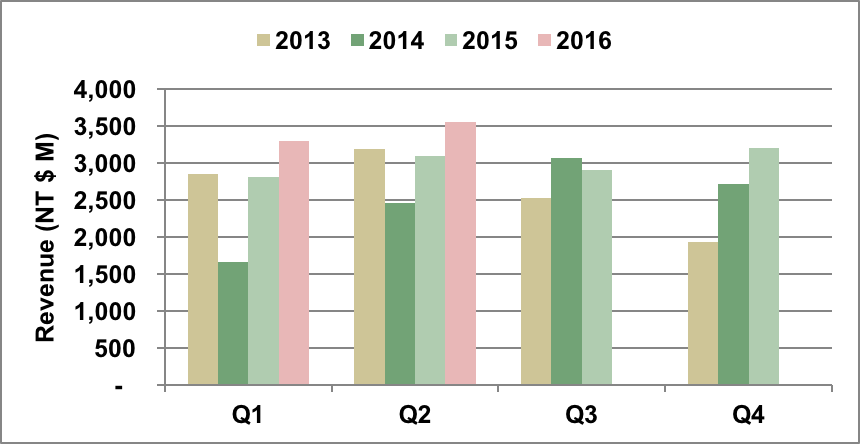Here's my weekly report, a recap of recent industry news that caught my attention.
Companies and Products
Airbus Defence and Space received the third contract in 18 months for GaN power amplifiers (PAs) for satellites. The L-Band, 50 to 100 W PAs have 50 percent less mass per W of output power than prior PA generations and are 15 percent more efficient than previous models.
Ampleon and RFMW have extended their distribution agreement to Europe, the Middle East (including Israel) and Africa.
Custom MMIC introduced a balanced driver MMIC that covers 26 to 35 GHz and has 15.5 dB gain with +21 dBm output power at 1 dB compression. Biased at 5 V, the amplifier draws 90 mA. The firm also released a 2 to 20 GHz distributed driver amplifier that is a drop-in replacement for a Mimix Broadband (now MACOM) MMIC. The amplifier has 14 dB gain and +26 dBm output power at 1 dB gain compression.
It's been a year since IBM's semiconductor unit became part of Globalfoundries, on July 1, 2015. The Poughkeepsie Journal reviewed the impact of the amalgamation on the former IBM fab in East Fishkill, New York, and the Burlington Free Press published a similar article on the operation in Essex Junction, Vermont.
In a U.S. Army exercise, Lockheed Martin's AN/TPQ-53 AESA radar successfully tracked drones and relayed the tracking data to command and control. Lockheed Martin is manufacturing multiple Q-53 radars each month.
MaxLinear completed the acquisition of Broadcom's wireless infrastructure backhaul business, paying $80 million for the unit. The Broadcom group was developing technology and products for microwave, millimeter wave and 5G markets, which will strengthen MaxLinear's RF strategy.
Mimosa Networks announced a wireless, last mile solution for densely populated areas. Using the 5 GHz band, the multi user, point-to-multipoint system achieves up to 1 Gbps throughput. A typical deployment provides 300 to 350 Mbps to 30 to 40 subscribers that are located within 500 m of an access point.
OneWeb completed the preliminary design review (PDR) for their low earth orbit (LEO) satellites. The company says it is on schedule to build and launch 10 pilot satellites in 2017, which will be followed by production of 890 satellites to populate their proposed 700 satellite LEO constellation.
Poland said it would sign a letter of intent for the Patriot missile system, after Raytheon pledged that 50 percent of the €5 billion deal would be "done in Poland by Polish arms firms."
Satellite operator SES will pay $730 million to acquire the remaining 50.9 percent stake in O3b Networks, giving SES total ownership. O3b operates a 12 satellite constellation in medium earth orbit (MEO) and provides communications services to areas without broadband internet access.
Skyworks added three new switches for handset antenna tuning applications. The SP2T, SP3T and SP4T products incorporate a GPIO control interface.
Compound foundry WIN Semiconductors reported Q2 revenue of NT$ 3,559 million ($110 million), an increase of 8 percent sequentially and 15 percent above last year's quarter.

Markets and Technology
Cellular — It's the end of an era, as the U.S. Senate will stop issuing BlackBerry mobile devices once their current inventory is gone. Senators and staffers will switch to the Samsung S6 or iPhone. Not that many years ago, the BlackBerry was the premier mobile device, the handset of choice.
5G — Paul Kyungwhoon Cheun, Samsung's executive VP and head of the Next Generation business team, discusses their 5G initiatives in this company interview. One of Samsung's accomplishments on the path to 5G has been demonstrating the handover among base stations at millimeter wave frequencies. The test demonstrated average data rates of 1.67 Gbps.
European Union Commissioner Günther Oettinger received a "manifesto for timely deployment of 5G in Europe." Developed by the European telecom sector and industries that benefit from 5G, the manifesto calls for 5G to launch in "at least one city in each of the 28 member states by 2020."
We've wondered why there's all this 5G activity before the standards are defined. Volker Held of Nokia writes that it's laying the foundation.
Broadband — It's hard to keep up with all the Wi-Fi standards. To help you, here's an tutorial on 802.11ad, which adds 60 GHz to the 2.4 and 5 GHz bands.
Space Exploration — NASA's Juno spacecraft successfully orbited Jupiter after a nearly five year voyage from Earth. The mission's goal is to "understand origin and evolution of Jupiter, look for solid planetary core, map magnetic field, measure water and ammonia in deep atmosphere, observe auroras."
If you come across news that you think your colleagues will find interesting, please send it to me at glerude@mwjournal.com.
Make some news this week.

